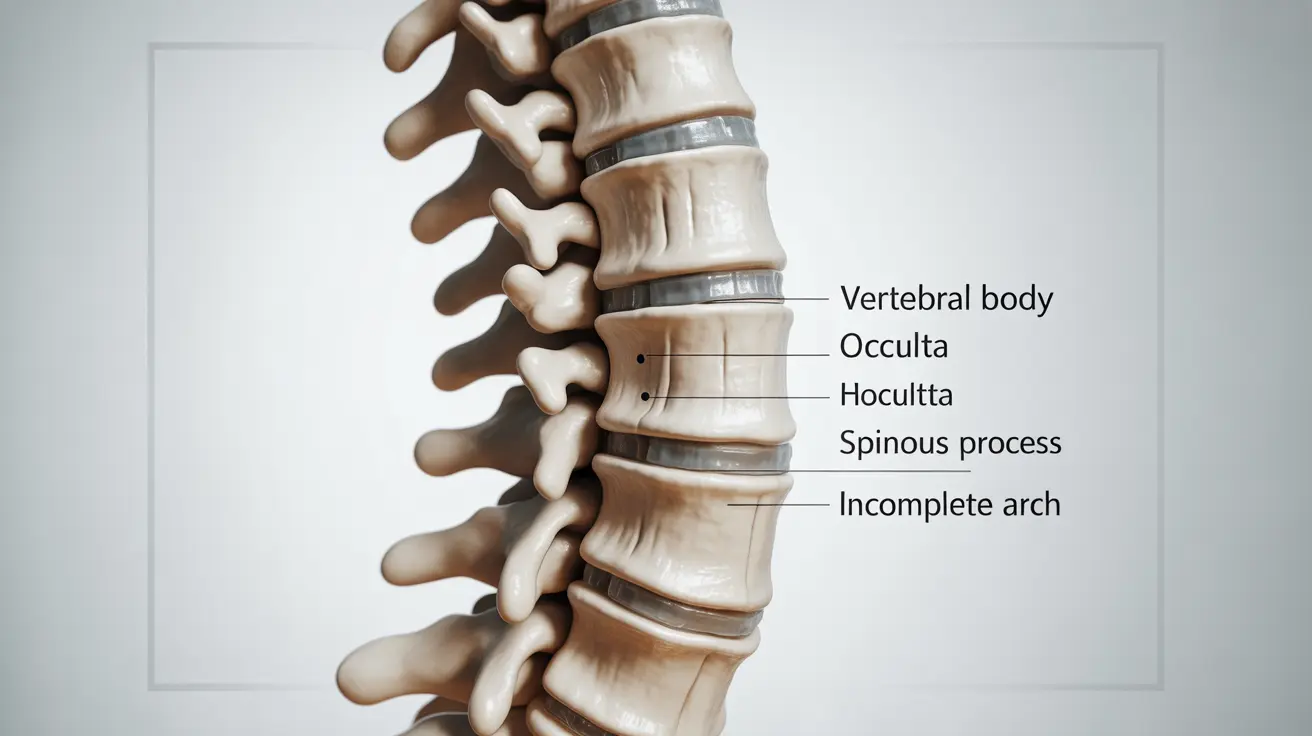Spina bifida occulta is the mildest and most common form of spina bifida, a condition affecting the development of the spine. This developmental variation occurs during the first month of pregnancy when the spinal bones don't fully close around the spinal cord. Despite its medical-sounding name, spina bifida occulta is relatively common and often goes unnoticed throughout a person's life.
Understanding this condition is crucial for both expectant mothers and individuals who may have been diagnosed with it. This guide will explore what spina bifida occulta means for your health, its potential impacts, and how medical professionals approach its management.
What Is Spina Bifida Occulta?
Spina bifida occulta occurs when one or more vertebrae don't form completely during fetal development. The term "occulta" means hidden, reflecting that this condition is typically invisible from the outside. Unlike other forms of spina bifida, the spinal cord and nerves usually remain protected and undamaged.
This condition affects approximately 10-20% of the general population, making it significantly more common than other types of spina bifida. Most people with spina bifida occulta lead normal, healthy lives without ever knowing they have the condition.
Signs and Symptoms
Most individuals with spina bifida occulta experience no symptoms at all. However, some people might notice:
- A small dimple in the skin above the affected area
- A patch of thick hair on the lower back
- A birthmark or unusual pigmentation over the affected vertebrae
- A small gap that can be felt in the spine
In rare cases, some individuals might experience:
- Lower back pain
- Leg weakness or numbness
- Bladder or bowel problems
- Foot deformities
Diagnosis Methods
Spina bifida occulta is typically discovered incidentally during imaging tests performed for other reasons. Common diagnostic tools include:
- X-rays of the spine
- MRI scans
- CT scans
These tests can reveal the gap in the vertebrae that characterizes the condition. Healthcare providers might recommend further testing if symptoms are present or if there are concerns about potential complications.
Treatment and Management
For most people with spina bifida occulta, no treatment is necessary. However, if symptoms develop, treatment options may include:
- Physical therapy for muscle weakness or pain
- Pain management techniques
- Regular monitoring by healthcare providers
- Surgery in rare cases where complications develop
Prevention During Pregnancy
While spina bifida occulta cannot always be prevented, certain steps can reduce the risk of neural tube defects during pregnancy:
- Taking folic acid supplements before and during pregnancy
- Maintaining a healthy, balanced diet
- Avoiding alcohol and tobacco
- Regular prenatal care
- Managing chronic health conditions
Frequently Asked Questions
What is spina bifida occulta and how common is it?
Spina bifida occulta is a mild form of spina bifida where one or more vertebrae don't fully close around the spinal cord. It affects approximately 10-20% of the population and typically causes no health problems.
What symptoms or signs might indicate I have spina bifida occulta?
Most people with spina bifida occulta have no symptoms. Some may have visible signs like a dimple or patch of hair on the lower back. Rarely, individuals might experience back pain, leg weakness, or bladder/bowel issues.
How is spina bifida occulta diagnosed if there are usually no symptoms?
The condition is usually discovered accidentally during X-rays, MRIs, or CT scans performed for other reasons. These imaging tests can clearly show the small gap in the vertebrae characteristic of the condition.
Can spina bifida occulta cause complications, and what treatments are available?
Most people don't require treatment. If complications occur, treatments may include physical therapy, pain management, or rarely, surgery. Regular monitoring by healthcare providers can help identify and address any developing issues.
How can spina bifida occulta be prevented during pregnancy?
While not all cases can be prevented, taking folic acid supplements, maintaining a healthy diet, avoiding alcohol and tobacco, and receiving regular prenatal care can help reduce the risk of neural tube defects during pregnancy.




